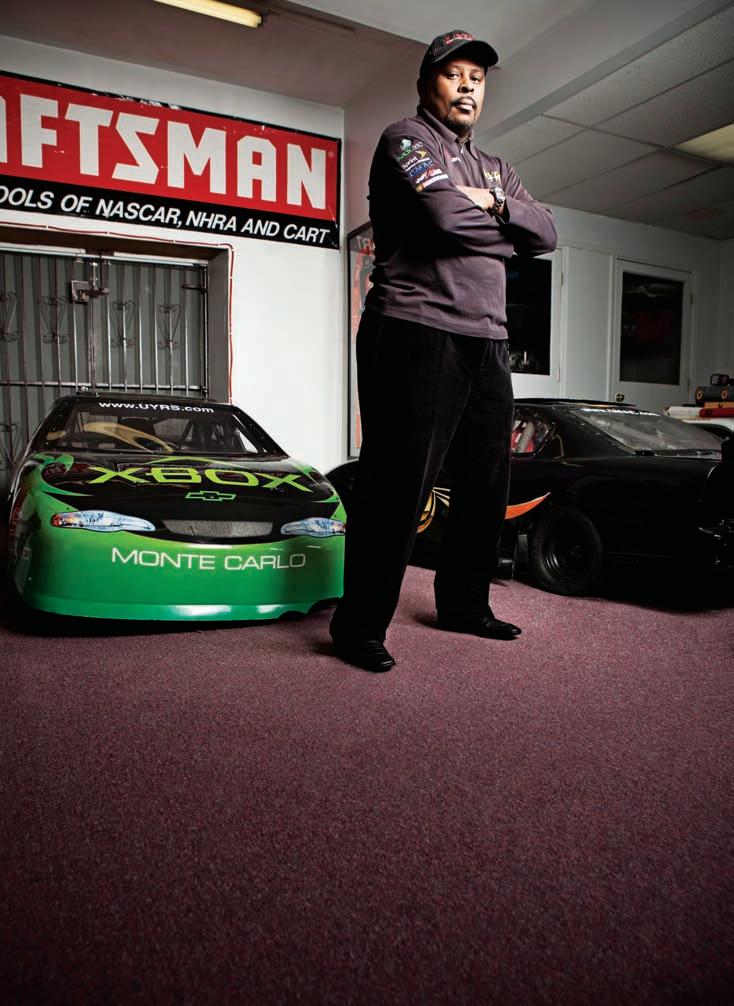
5 minute read
Voices When disaster struck Haiti United pitched in to help.
HEMISPHERESMAGAZINE.COM | MARCH 2010 voices
The Connector
Advertisement
Using its global reach to bring people together, United responds to urgent crises such as the earthquake in Haiti. // BY ROD O’CONNOR
AFTER RETURNING from Haiti last month, Sonya Jackson, managing director Corporate Social Investment for United and president of the United Airlines Foundation, can say fi rst-hand that the immediate needs we all heard about were obvious: Water, medical supplies and relief workers had to be shipped in; evacuees, mostly children, needed to be transported out.
As one of the world’s largest airlines, it was clear that United was in a position to help and took immediate action to do so.
Behind-the-scenes, a team co-led by Jackson and Jim DeYoung, managing director of United’s operations control center, formulated a highly coordinated relief plan involving scores of United employees. Senior management quickly gave the plan a green light and put the appropriate resources where they needed to be to fl y safely to Haiti.
Flying into Port-au-Prince—a city United normally doesn’t serve— necessitated regular contact with the military’s U.S. Southern Command, which is overseeing relief eff orts in Haiti, implementing a strict fl ight schedule that allows fl ights to arrive and depart the damaged airport.
Jackson’s team, working closely with corporate and non-profi t partners, quickly assembled the supplies most needed in Haiti, totaling 150,000 pounds of donated food, water,

voices
medicine, tents and other critical goods transported in six trips. This overwhelming amount of supplies that United needed to transport, including relief workers – some with up to 55 bags – was unprecedented and broke all cargo records for the company.
Extra cargo weight required special coordination among United’s cargo, weight and balance, and ramp services teams. “Our cargo team had to ensure the aircraft was loaded in a way that maximized every inch of the aircraft,” Jackson notes. “Our ramp personnel loaded more cargo than they normally would consider for a typical fl ight and our load planning team had to ensure the balance of the aircraft. They all did an amazing job.”
Prior to each fl ight, United employees worked with the State Department and U.S. Customs and Border Patrol
to bring hundreds of individuals, including orphans who had been paired with adoptive parents, back from Haiti to the United States. Employees escorted Haitian orphans to their new parents in Colorado, completing adoptions that had long been in the works. United’s airport operations team ensured passenger handling, security and international documentation requirements were met
At the Port-au-Prince airport, there are no parallel taxiways, so United’s pilots had to land and turn around at the end of the runway, taxi midway back and pull off on a narrow taxiway. The onboard crews who welcomed earthquake victims onto air-conditioned planes provided comfort in the form of water, sandwiches, and simple human compassion.
“With some of the people and supplies that we transported in and out of Haiti—orphans, doctors, relief workers, cargo—we had existing partnerships with their respective organizations,” Jackson explains. “But there were many other groups where we didn’t. In those instances, we picked up the phone and started developing those relationships.”
Jackson and her team are focused on fi nding the best ways to leverage United’s resources—not only aircraft and corporate relationships, but also connecting customers and employees who want to help—to respond to the
challenges facing the communities that they serve. United made it easy for employees and customers to donate Mileage Plus miles and cash to the American Red Cross, a longtime United partner, just as the company did when it facilitated the donation of more than 71 million miles after the tsunami in Asia fi ve years ago.
United is also connecting its customers and employees to another important cause—hunger. Nearly 49 million Americans currently lack necessary food, according to the U.S. Department of Agriculture. Starting this month, United is empowering customers to fi ght this growing problem by purchasing an “Eat for Good” snackbox, with one dollar from each purchase going to the national
Jackson and her team focus on the best ways to leverage United’s resources to respond to the ongoing challenges facing the global community.
Artist Melissa Don designed the “Eat for Good” snackbox based on her love of nature
organization Feeding America (see the Choice Menu on the back cover). The attention-grabbing, brightly colored snackbox was designed by a student from After School Matters, another United partner program led by Maggie Daley, wife of Chicago Mayor Richard M. Daley, that provides after-school initiatives for Chicago students.
“Eat for Good” is just the latest example of United making connections. Since 2007, the Hugyou Family Teddy Bear program has encouraged fl yers to donate dollars or Mileage Plus miles to raise funds and deliver teddy bears to children undergoing medical treatment. Plus, the ongoing Charity Miles program makes it easy for customers to go online and donate unused miles. In 2008 alone, nearly 200 million miles were donated to help organizations like the American Red Cross to fl y relief workers to areas impacted by natural disasters.
But perhaps United’s best example of connecting its employees with the community is during events like the Breast Cancer Network of Strength’s Walks to Empower and the annual Holiday Giving program, which supplies gifts and a holiday meal for those in need.
“What impresses me the most is the way our people are willing to give,” Jackson says of her fellow employees. “They care. They get involved. They could not be more generous with their time.










